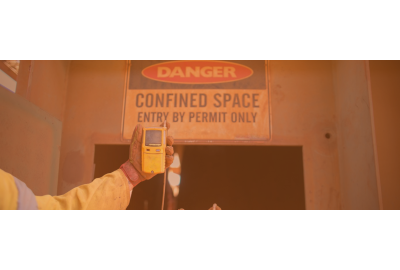*Disclaimer*
The information contained on this page is for promotional and informational purposes only. All equipment should be used by trained professional tradesmen who have been trained how to use the equipment described on this page, and understand the risks of their work. PowerPak assumes no responsibility for errors or omissions in the use or misuse of any product purchased. In no event shall PowerPak be liable for any direct, special, indirect, consequential, or incidental damages or any damages whatsoever, whether in an action of contract, negligence or other torts, arising out of or in connection with the use of this information or the contents of this page. PowerPak reserves the right to make additions, deletions, or modifications to the contents on this page at any time without prior notice.
OSHA Fact Sheet: Confined Spaces in Residential Construction
Working closely with the National Association of Home Builders, OSHA has released a new Fact Sheet.
It's well known that confined spaces can present potential hazards on construction sites and residences alike.
About the Residential Confined Space Fact Sheet
The purpose of the Fact Sheet is to 'how-to" guide for how employers can meet OSHA's standard for Confined Spaces in Construction (29 CFR 1926 Subpart AA). Not included is enforcement actions.
The Fact Sheet is accompanied by a thorough FAQ, which lays out provisions and how they're applicable to residential construction.
What You Need to Know
These new standards apply to any space that meets at least one of the following three criteria:
- Space is large enough for a worker to enter.
- Space has limited/restricted means of entry and/or exit.
- Space is not designed for continuous occupancy.
If a particular confined space contains specific hazardous conditions, it is considered a permit-required confined space.
Basically, these permit-required spaces are identified as threatening to a workers' safety or life if not properly evaluated.
If working in an attic, basement or crawl space, we recommend being vigilant and investigating whether or not you are dealing with a permit-required confined space.
What Are Permit-Required Spaces?
- Already contains or has the potential to become a hazardous atmosphere
- Contains a material(s) that could potentially engulf an entrant
- Is internally-configured in such a way that an entrant could be trapped or asphyxiated by inwardly converging walls or by a floor which slopes downward and tapers to a smaller cross-section
- Contains any other recognized serious safety or health hazards
Conclusion
For more information about how employers can determine if working in a space that's permit-required or how Residential Construction is impacted by this Standard, one should refer to the Fact Sheet or accompanying Frequently Asked Questions
Follow PowerPak Civil & Safety on Facebook & LinkedIn to receive articles, news and exclusive offers directly in your feed.







